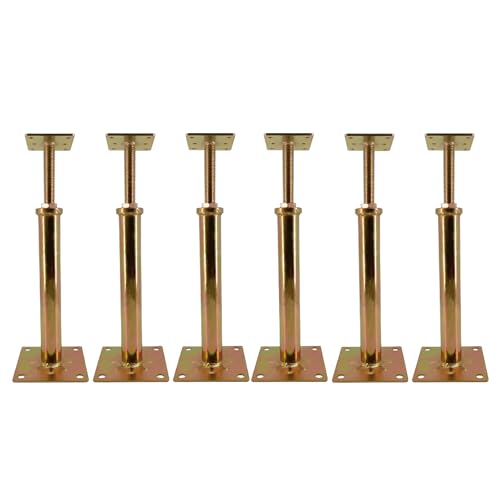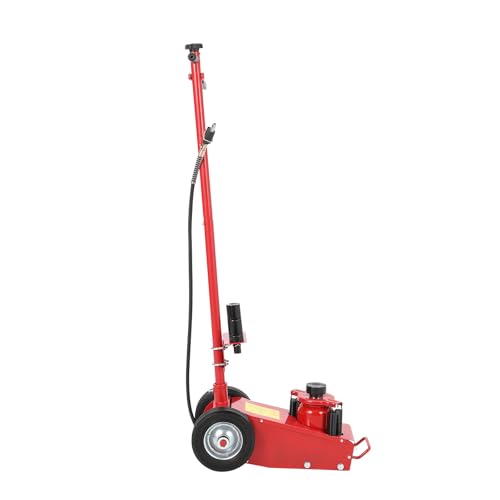
How to Tell If Your Timing Belt Needs Replacement

If your engine won’t start, ticks, squeals, or misfires, your timing belt may need replacement.
Look for oil leaks near the belt area, rough running between 2,000 and 4,000 RPM, or erratic RPM fluctuations.
Visible wear, cracks, missing teeth, or fraying on the belt are clear signs.
Ignoring these indicators risks severe engine damage, so timely inspection and replacement following manufacturer guidelines are critical.
Keep an eye out to understand maintenance essentials and prevent costly repairs.
Table
- Main Points
- Engine Won’t Start or Turn Over
- Unusual Ticking or Squealing Noises From the Engine
- Engine Misfires or Runs Roughly
- Oil Leaks Near the Timing Belt Area
- Poor Engine Performance Between 2,000 and 4,000 RPM
- Erratic or Fluctuating RPM Readings
- Visible Wear or Damage on the Timing Belt
- Frequently Asked Questions
- Final Thoughts
Main Points
- Listen for rattling, ticking, or high-pitched squealing noises from the engine area indicating belt wear or looseness.
- Check for visible signs like missing teeth, cracks, fraying, or glazing on the timing belt surface.
- Notice engine misfires, rough idling, or decreased performance signaling timing belt synchronization issues.
- Follow manufacturer’s recommended inspection intervals, typically between 60,000 to 100,000 miles, for proactive checks.
- Replace the timing belt immediately if damage or persistent symptoms are detected to avoid engine damage.
Engine Won’t Start or Turn Over
If your engine won’t start or turn over despite the starter motor engaging, the timing belt may be at fault. The timing belt synchronizes the crankshaft and camshaft, enabling ignition. When it’s worn-out or broken, this coordination fails, causing the engine to stall. You might mistake this for a dead battery, but a worn-out timing belt is a critical sign that its time for timing belt replacement. Ignoring these signs can lead to severe engine damage, especially if it breaks while driving. Regular maintenance checks are essential because most timing belt needs fall between 60,000 to 100,000 miles. Addressing this promptly liberates you from costly repairs and keeps your engine running reliably. If your engine won’t start, prioritize professional diagnosis to confirm timing belt issues.
Unusual Ticking or Squealing Noises From the Engine

If you hear unusual ticking sounds from your engine, it could indicate that your timing belt is worn or slipping. High-pitched squealing often results from a loose or deteriorating belt affecting synchronization between engine components. Identifying these noises early helps you address potential timing belt issues before they cause major engine damage.
Identifying Ticking Sounds
How can you tell when your timing belt is starting to fail? One key symptom is a persistent ticking noise from the engine. This sound indicates the belt may be slipping or has loosened, signaling urgent need to replace it. Ignoring these timing symptoms risks severe engine damage.
 What Is the Average Labor Time for Timing Belt Replacement?
What Is the Average Labor Time for Timing Belt Replacement?| Symptom | What It Indicates |
|---|---|
| Ticking Noise | Belt slipping or loose |
| Increased Engine Vibration | Belt wear worsening |
| High-Pitched Sounds | Imminent belt failure |
| Silent Operation | Healthy timing belt |
Monitor these signs closely. A healthy timing belt runs quietly; any change in sound demands prompt professional inspection. Regular replacement every 60,000 to 100,000 miles guarantees you avoid these ticking noises and protect your engine’s longevity.
Causes of Squealing
Why do you hear squealing or unusual ticking noises from your engine? These sounds often signal wear in the timing belt, which is responsible for synchronizing the crankshaft and camshaft. A ticking noise typically indicates the timing belt isn’t turning the crankshaft efficiently, possibly due to low oil affecting belt tension. Meanwhile, squealing sounds usually stem from misalignment or deterioration of the timing belt’s surface. This wear compromises engine performance by disrupting valve timing, risking severe damage if ignored. High-pitched screeches or persistent whirring require immediate inspection. By monitoring these noises and understanding their cause, you take control of your engine’s health and avoid costly repairs. Your timing belt’s condition directly impacts your vehicle’s freedom and reliability—don’t let neglect hold you back.
Engine Misfires or Runs Roughly

When your engine misfires or runs roughly, it often signals that the timing belt isn't keeping the crankshaft and camshaft synchronized properly. Engine misfires happen when valve timing is off, causing a rough-running engine and loss of power. Ignoring these symptoms risks severe engine damage. To prevent this, diagnose issues promptly and replace your timing belt as needed.
| Symptom | Cause |
|---|---|
| Engine misfires | Timing belt slipping or worn |
| Rough idling | Improper valve timing |
| Inconsistent RPM | Crankshaft and camshaft out of sync |
| Vibrations | Erratic engine behavior |
| Loss of power | Cylinder timing errors |
Address these symptoms immediately to maintain ideal engine function and freedom from breakdowns.
Oil Leaks Near the Timing Belt Area

Engine performance issues like misfires or rough idling can also be linked to problems beyond timing synchronization, such as oil leaks near the timing belt area. Oil leaks often emerge around the timing belt cover due to gasket wear or loosening. When the timing belt or its components fail, oil can seep into the engine compartment, increasing the risk of overheating and severe engine damage. To prevent engine failure, regularly inspect for oil leaks, especially if your vehicle’s owner’s manual highlights specific intervals or signs to watch. If you detect any leaks, don’t delay—consult a mechanic immediately to assess the timing belt and related seals. Prompt action can prevent costly repairs and guarantee your timing belt functions properly, safeguarding your engine’s performance and longevity.
Poor Engine Performance Between 2,000 and 4,000 RPM

If your car shows slow acceleration or unusual rattling sounds between 2,000 and 4,000 RPM, it often signals timing belt wear or slippage. Poor engine performance in this RPM range is a critical sign that your timing belt may have missing teeth or is misaligned. This condition disrupts engine timing, increasing strain and risking costly damage if ignored. Monitoring these symptoms closely allows you to act before further complications arise. Timing belt replacement is typically recommended between 60,000 to 100,000 miles to maintain ideal engine function. Don’t overlook these signs; addressing timing belt issues promptly guarantees your engine runs smoothly and liberates you from unexpected breakdowns. Regular inspection and timely replacement safeguard your vehicle’s performance and longevity.
Erratic or Fluctuating RPM Readings
Beyond poor engine performance, erratic or fluctuating RPM readings often point to a timing belt that’s worn or loose, disrupting synchronization between engine components. When your RPM meter behaves unpredictably, it signals potential timing belt issues requiring immediate attention. To liberate your engine from damage, watch for these signs:
- RPM spikes or drops without driver input
- Inconsistent engine idle or acceleration
- Sudden RPM fluctuations during steady driving
- Difficulty maintaining smooth engine performance
These erratic RPM behaviors usually stem from a timing belt with missing teeth or improper tension. If you notice such symptoms, don’t hesitate to seek a mechanic diagnosis. Timely replacement of your timing belt, typically between 60,000 and 100,000 miles, prevents costly repairs and restores reliable engine performance.
Visible Wear or Damage on the Timing Belt
Check your timing belt closely for cracks, fraying, or missing teeth, as these are clear signs it’s wearing out. Any damage like this reduces the belt’s ability to maintain proper engine timing and risks failure. If you spot these issues, plan to replace the belt immediately to avoid costly repairs.
 Why Replace Your Toyota Camry Timing Belt?
Why Replace Your Toyota Camry Timing Belt?Cracks and Fraying
Visible cracks and fraying on your timing belt signal significant wear that compromises its structural integrity. Ignoring these signs can lead to engine failure, costing you freedom from unexpected breakdowns. Inspect your timing belt every 60,000 to 100,000 miles. Look specifically for:
- Fine cracks running along the belt’s surface, indicating rubber degradation.
- Fraying edges that show the belt’s fabric is unraveling.
- Small tears or splits that can expand rapidly under stress.
- Uneven wear patterns that disrupt belt tension and function.
If you spot any of these issues, replace the timing belt immediately. Addressing cracks and fraying early liberates you from catastrophic engine damage and costly repairs, ensuring your vehicle runs smoothly and reliably.
Missing Teeth Signs
Missing teeth on your timing belt signal excessive wear that compromises engine synchronization between the crankshaft and camshaft. Since the timing belt works by engaging teeth on gears to maintain precise timing, missing teeth disrupt this important role, causing slippage and timing errors. One of the most common signs you’ll notice is a noise coming from the engine area—often a rattling or ticking sound indicating the belt isn’t meshing properly. Visible missing teeth, along with cracks or fraying, mean the belt’s integrity is failing and demands immediate replacement. Ignoring these signs risks catastrophic engine damage. Regular inspections help you catch missing teeth early, ensuring your engine runs smoothly and freeing you from unexpected breakdowns. Replace the belt promptly to maintain your vehicle’s reliability and performance.
Frequently Asked Questions
What Are the Symptoms of a Bad Timing Belt?
You’ll spot engine performance issues, unusual noises, or oil leaks signaling timing belt lifespan end. Conduct visual inspection tips like checking cracks or wear. Address these symptoms promptly to liberate your engine from costly failures.
Can You Tell if a Timing Belt Needs to Be Replaced?
You’ll notice engine performance drops coinciding with timing belt lifespan nearing its replacement intervals. Don’t buy common myths; regular maintenance tips guarantee you replace it timely, preventing costly damage and liberating your vehicle’s reliability and your peace of mind.
Do You Get a Warning Before the Timing Belt Goes?
You rarely get clear warning signs before timing belt failure; engine noises might hint issues. Stick to the timing belt lifespan and replacement interval through regular maintenance to avoid sudden breakdowns and protect your engine effectively.
How Do You Check Your Timing Belt?
You check your timing belt by performing timing belt maintenance: visually inspecting for belt wear indicators like cracks or fraying, following replacement frequency guidelines, and noting engine performance impact. Use precise visual inspection techniques for accurate assessment.
Final Thoughts
If your engine stutters like a hesitant heartbeat or you catch faint ticking near the timing belt area, don’t ignore it. Picture the belt as your engine’s silent conductor—any wear, oil leaks, or erratic RPMs are its warning signals. By spotting these signs early, you protect your engine from sudden failure and costly repairs. Stay vigilant, inspect regularly, and replace the timing belt before it snaps, ensuring your engine runs smoothly and reliably every time.
 What Are the Top Shops for Timing Belt Replacement?
What Are the Top Shops for Timing Belt Replacement?Reliable Floor Jacks on a Budget: Best Picks for Under $150
Top-Rated Floor Jacks Over $100: Built for Professionals, Priced for Smart Buyers
If you want to know other articles similar to How to Tell If Your Timing Belt Needs Replacement you can visit the Timing Belt Care and Replacement category.
Leave a Reply








































This is also interesting